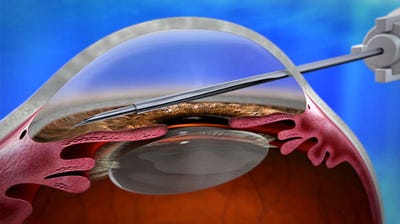FDA Approves Allergan Glaucoma Device
November 22, 2016
The gel stent reduces intraocular pressure in patients in whom previous treatments have failed.
Nancy Crotti
 FDA has approved the Xen glaucoma treatment system, which provides a new treatment option for the millions of Americans with refractory glaucoma.
FDA has approved the Xen glaucoma treatment system, which provides a new treatment option for the millions of Americans with refractory glaucoma.
Allergan acquired the Xen system when it bought Aliso Viejo, CA-based AqueSys last year. The system includes the permanent Xen45 Gel Stent, which becomes flexible after implantation, and the Xen Injector. It is designed to reduce intraocular pressure (IOP) in three types of patients:
Those who have refractory glaucomas, and for whom previous surgical treatment has failed;
Those with primary open-angle glaucoma;
And those with pseudoexfoliative or pigmentary glaucoma with open angles that are unresponsive to maximum-tolerated medical therapy.
Xen is the latest glaucoma stent to hit the U.S. market. In 2013, FDA approved the iStent, a 1-mm-long titanium stent with a 120-micron opening. The CyPass Micro-Stent, which Novartis plans to acquire via its proposed purchase of Menlo Park, CA-based Transcend Medical is aimed at patients who have mild-to-moderate glaucoma and are undergoing cataract surgery. The device is implanted just below the surface of the eye and is designed to reduce (IOP) in patients with primary open-angle glaucoma. CyPass remains an investigational device in the U.S., according to the Transcend website.
XEN is implanted through an ab interno approach and reduces IOP by creating a new drainage channel with a permanent implant that becomes flexible, according to a company statement.
"Allergan has a deep, long-term commitment to developing treatments for patients with glaucoma, a sight-threatening disease that affects millions in the United States and worldwide," said David Nicholson, chief R&D officer at Allergan. "We are thrilled to receive FDA clearance for the XEN glaucoma treatment system, which will provide a new treatment option for patients struggling to bring down their intraocular pressure,"
In the U.S. pivotal trial conducted in 65 refractory glaucoma patients, XEN reduced IOP from a mean medicated baseline of 25.1 (+ 3.7) mmHg to 15.9 (+ 5.2) mmHg at the 12 month visit, the statement notes. The mean baseline number of IOP-lowering medications was 3.5 (± 1.0) versus an average use of 1.7 (± 1.5) medications in the 52 patients seen at a 12-month followup. XEN also allows for keeping postoperative options open, allowing physicians to utilize other IOP-reduction techniques in the event that they are still needed after surgery, the company said.
"Xen is a new option that provides an opportunity for surgical intervention in refractory glaucoma patients. Xen can effectively lower IOP, in fact, studies have shown that at 12 months using Xen, patients used, on average, less IOP-lowering drops than they did before Xen was implanted," said Robert N. Weinreb, MD, chairman and distinguished professor of Ophthalmology at the University of California, San Diego.
Xen has the CE Mark in the Europe, where it is used to reduce IOP in patients with primary open angle glaucoma where previous medical treatments have failed. It is also licensed for use in Canada, Switzerland, and Turkey.
Allergan plans to launch the XEN Glaucoma Treatment System in the U.S. in early 2017. More than 10,500 XEN Gel Stents have already been distributed worldwide.
Nancy Crotti is a contributor to Qmed.
Like what you're reading? Subscribe to our daily e-newsletter.
[Image courtesy of AqueSys]
About the Author(s)
You May Also Like


.png?width=300&auto=webp&quality=80&disable=upscale)